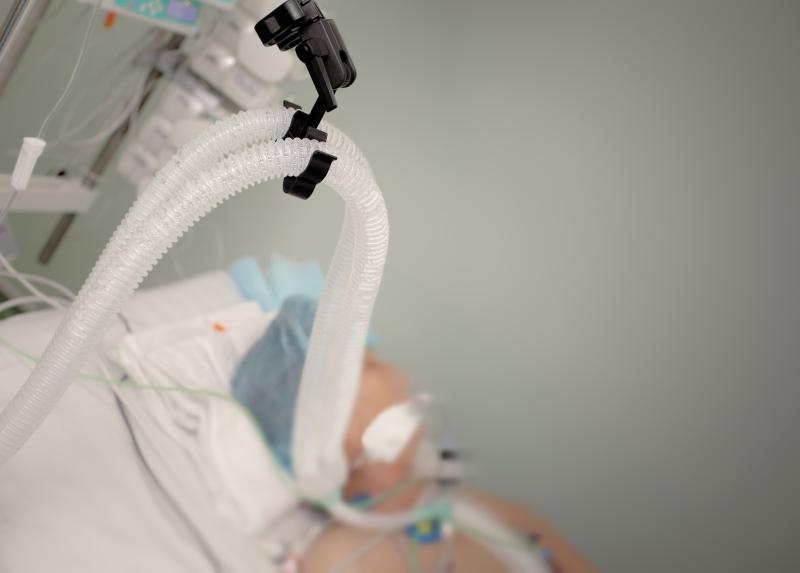Serum molecular signature may help catch severe COVID-19 early





Severe coronavirus disease 2019 (COVID-19) has a specific serum proteomic and metabolomic profile, which in turn may be used for early detection, according to a recent study.
“Although COVID-19 can be diagnosed effectively by 293 nucleic acid-based methods at an early stage, it is equally critical to identify severe COVID-19 patients before their manifestation of severe symptoms to minimize mortality,” researchers said, pointing out that the current roster of biomarkers involves proteins like the C-reactive protein, and serum amyloid A-1 and -2, which are already being used to assess COVID-19 severity.
Using serum samples from 46 COVID-19 patients and 53 non-COVID-19 controls, a machine-learning model identified 29 important biomarkers, including 22 proteins and seven metabolites. [Cell 2020;doi:10.1016/j.cell.2020.05.032]
The researchers tested this panel out in a training group consisting of 18 nonsevere and 13 severe COVID-19 patients. The model garnered an area under the curve (AUC) of 0.957 in the training set. One male patient, the oldest in this group, had nonsevere COVID-19 but was wrongly classified by the algorithm to have severe disease.
The researchers offered his advanced age as a potential explanation for this mistake.
In a subsequent independent cohort of 10 patients, the algorithm used the proteomic and metabolomic data to correctly detect all but one patient with severe disease. This outlier was a 62-year-old male and had the longest preadmission treatment, receiving traditional Chinese medication for at least 20 days before admission.
“The extended administration of traditional Chinese medicines might have been a confounding factor for the model,” the researchers explained.
Moreover, one nonsevere patient was mistakenly classified as having severe disease. This may be due to his having chronic hepatitis B infection, diabetes, and the longest duration of hospitalization among the nonsevere cases. Another male patient was wrongly classified to have severe disease, although no readily apparent reasons were cited.
The researchers also found 105 proteins differentially expressed in sera of COVID-19 patients, of which 93 appeared to coincide with a severe disease. Most of these proteins belonged to three major pathways: activation of the complement system, platelet degranulation, and macrophage function.
Similarly, 373 metabolites were found to be differently modulated in COVID-19 serum samples, of which 80 played roles in the three major pathways named above.
“The proteomic and metabolomic analysis in this study are not absolute quantification. If the model is to be applied in clinic, more rigorous quantification and extensive validation of these molecules using standard peptides and metabolites are required,” the researchers said. “Impact of drugs including traditional Chinese medicine to the proteomic/metabolomic profiles have to be evaluated too.”
“We demonstrated the potential of identifying COVID-19 patients who may eventually become severe cases based on analysis of a panel of serum proteins and metabolites. Our data offer a landscape view of blood molecular changes induced by SARS-CoV-2 infection, which may provide useful diagnostic and therapeutic clues in the ongoing battle against COVID-19 pandemic,” they added.